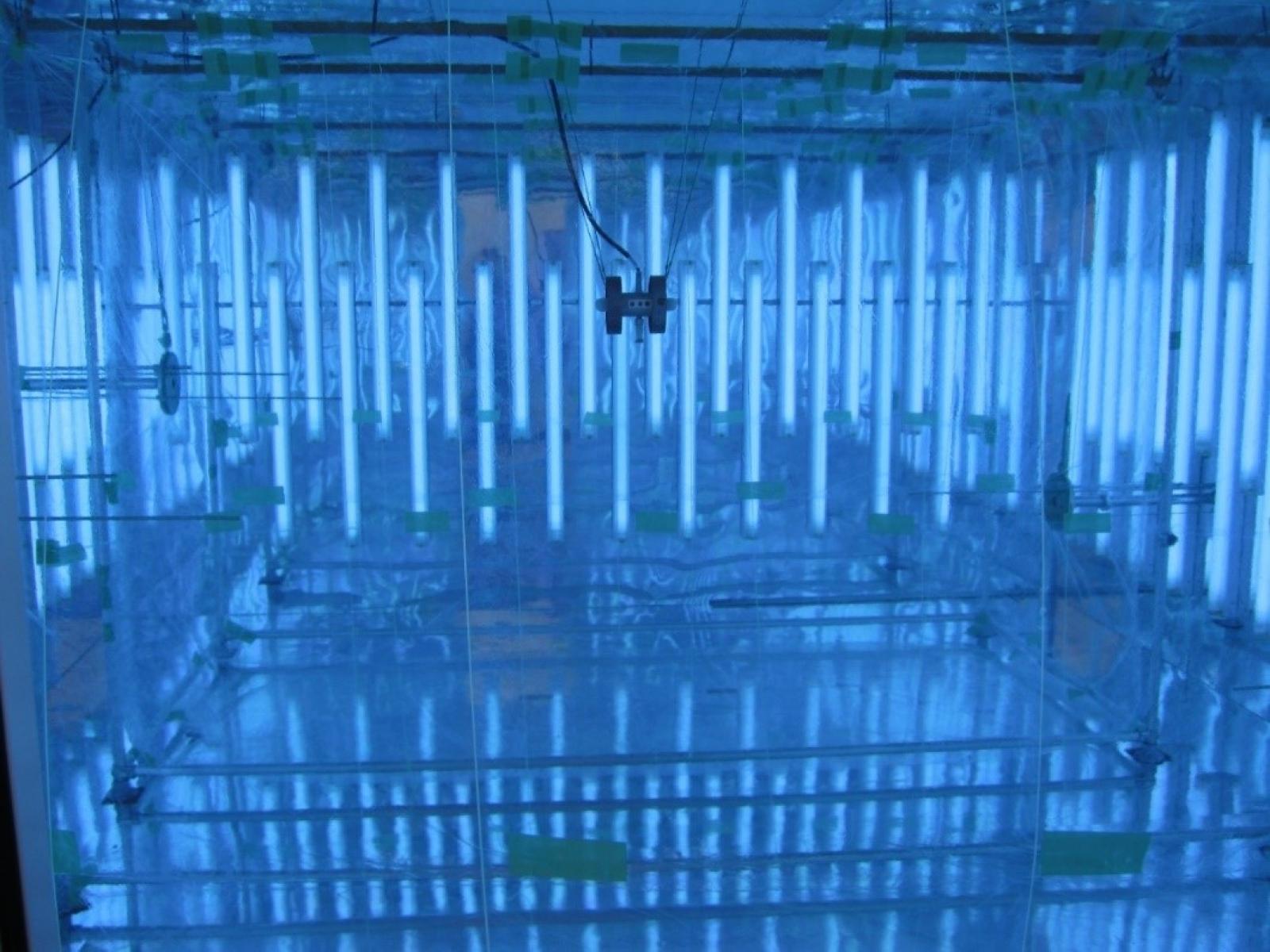Photolysis is a Major Removal Mechanism that Controls the Budget of Organic Aerosol

Researchers used an environmental chamber to mimic sunlight-driven chemical reactions of organic aerosol in the atmosphere.
(Image courtesy of John Schilling | Pacific Northwest National Laboratory)
The Science
Carbon-containing vapors in the atmosphere condense into small organic particles (aerosol), which can influence climate by reflecting sunlight and initiating cloud droplet formation. Predicting the atmospheric abundances of organic particles using atmospheric models is challenging because of the complexities involved. For example, reactions that remove particles by converting them back into vapors are often not included in atmospheric models. Researchers at the Department of Energy’s Pacific Northwest National Laboratory (PNNL) and the University of Washington conducted new measurements quantifying how interactions between organic aerosol and UV light remove organic particle mass from the atmosphere. Researchers found that this chemical removal mechanism is often much more efficient than mechanical removal of particles from the atmosphere. The results are an important insight into how atmospheric models can better describe organic aerosol lifetimes.
The Impact
Atmospheric models usually describe the mechanical removal of aerosol, but not the chemical loss processes. The removal of aerosol due to reactions initiated by sunlight (photolysis) has the potential to be more efficient than mechanical removal, but only limited measurements of photolysis exist. Therefore, most models do not include organic aerosol loss due to photolysis. This study quantified the aerosol loss due to photolysis for a wide range of organic aerosol. When the measurements were incorporated into a chemical transport model, organic aerosol concentrations decreased by 50% over the Amazon. These new measurements of organic aerosol photolysis will help modelers more accurately predict organic aerosol budgets and lifetimes.
Summary
Researchers at PNNL used a large temperature-controlled environmental chamber outfitted with UV lights to simulate the lifecycle of organic aerosol in the laboratory. They first prepared organic aerosol particles by reacting organic vapors common in the atmosphere, such as isoprene or α-pinene with common atmospheric oxidants. Then, they exposed the particles to chamber UV lights for at least 24 hours and measured the rate at which particles were converted back into vapors. They used data collected by several mass spectrometers to examine the chemical changes in the aerosol composition. Special care was taken during this experiment to isolate light-driven processes from concurrent chemical reactions and artifacts introduced by chamber walls. Aerosol mass loss rates quantified from the experiments were used in an atmospheric model to simulate the lifecycle of organic particles in the Amazon region. The model predicted that photolysis reduced the organic aerosol concentrations by an average of 50%, indicating photolysis is a major removal mechanism that substantially shortens the lifetime of organic aerosol in the atmosphere.
PNNL Contact
John Shilling, Pacific Northwest National Laboratory, john.shilling@pnnl.gov
Funding
This research is based on work supported by the U.S. Department of Energy (DOE) Office of Science, Office of Biological and Environmental Research, Atmospheric Systems Research (ASR) program. Pacific Northwest National Laboratory is operated for DOE by Battelle Memorial Institute under contract DE-AC05-76RL01830.
Published: November 25, 2020
Zawadowicz M A, B H Lee, M Shrivastava, A Zelenyuk-Imre, R A Zaveri, C Flynn, J A Thornton, and J E Shilling. 2020. “Photolysis Controls Atmospheric Budgets of Biogenic Secondary Organic Aerosol.” Environmental Science & Technology, 54(7):3861–3870. DOI: 10.1021/acs.est.9b07051.